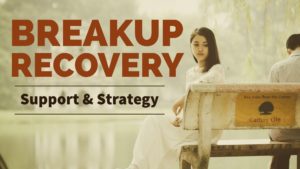Want to pay off your debt and save more money in 2017? You’re not alone! According to one survey of Google search data, searches for “Spend Less/Save More” were up 17.47% from 2016. Want to achieve your get-out-of-debt goal? If so, we recommend trying one of the five strategies here.
1. The Debt Snowball
This debt-payoff method, made famous by financial guru Dave Ramsey, has you pay off your smallest debts first. The idea behind the debt snowball is that you get a quick psychological boost from paying off some small debts from the get-go. This gives you the mental momentum to keep going when paying off debt.
To start a debt snowball, list your debts in order from smallest to largest. Use any extra money to pay off the smallest balance while you make minimum payments on your other debts. When your smallest debt is paid off, snowball that debt’s minimum payment, plus your extra cash towards paying off the next debt. By the time you get to the largest debt, you’ll be throwing a lot of money at it each month. (You can see how your debt is affecting your credit by viewing two of your credit scores, with updates every 14 days, on Credit.com.)
2. The Debt Avalanche
This is similar to the debt snowball in that you pay off one debt at a time. But it’s actually the more economical method of paying off debt. Instead of paying off smaller balances first, the debt avalanche has you start by paying off the debts with the largest interest rate.
The debt avalanche is a smart method if you already have the determination to make it through a long debt payoff process without the boost of paying off a few smaller debts early on. It can get you out of debt faster since you’ll stop accumulating interest on high-interest debts much more quickly.
3. The Debt Snowflake
This is a method that can be combined with one of the above options or used to pay off debt in any order you choose. The idea here is that you find small ways to save a few bucks, and then transfer that money saved toward debt payments.
With the debt snowflake method, you’ll need to be exceptionally aware of your spending patterns. For instance, if you normally spend $10 on a lunch out at work, but pack your lunch one day, you could save $5. That $5 is a snowflake that can then go toward paying off debt.
The key to debt snowflakes is to make sure they don’t “melt.” Get into the habit of transferring “snowflake” money to debt accounts immediately, or at least on a weekly basis. Otherwise, you run the risk of that hard-saved cash being used for other purposes.
4. The Credit Card Transfer
If much of your debt is in the form of high-interest credit card balances, consider using balance transfer offers to pay off that debt more quickly. Since credit cards often have interest exceeding 15%, it’s not unusual for most of your minimum payment to go toward interest, even on a relatively small balance. If you can transfer that balance to a card with a 0% introductory annual percentage rate, you can put more money toward the principal balance each month, paying off your debts more quickly.
Be careful, though, to read all the terms of a credit card balance transfer. Most cards charge a fee for the balance transfer. If you’ll pay off the card’s balance quickly, the transfer may actually cost more than it saves. You can find more info on some of the better balance transfer credit cards here.
5. The Half Payment Method
What if you’re on such a tight budget that you can’t even squeak out some extra dollars to start on a debt snowball or avalanche? One option is to start making half of your minimum payment every two weeks. Bi-weekly payments, which may fall when you get a paycheck, can save you money over time on debts that are compounded daily or monthly based on the average balance.
The reasoning behind biweekly payments is somewhat complex. But, essentially, paying more often allows less interest to accrue between payments, which means more of your payment goes toward the principal. Plus, if you make a half payment every two weeks, you’ll actually have made a whole extra minimum payment by the end of the year!
Half payments can help even out your bank account balance and can help bring down your debt balances more quickly. Combining the bi-weekly payment method with another method for applying any extra cash you scrape together toward one debt at a time could be a powerful option for meeting your financial resolution this year.
The post 5 Ever-So-Simple Strategies for Paying Off Debt in 2017 appeared first on Credit.com.
from Credit.com » Post Destinations » RichSingleMomma http://ift.tt/2kj0FLJ
via IFTTT










